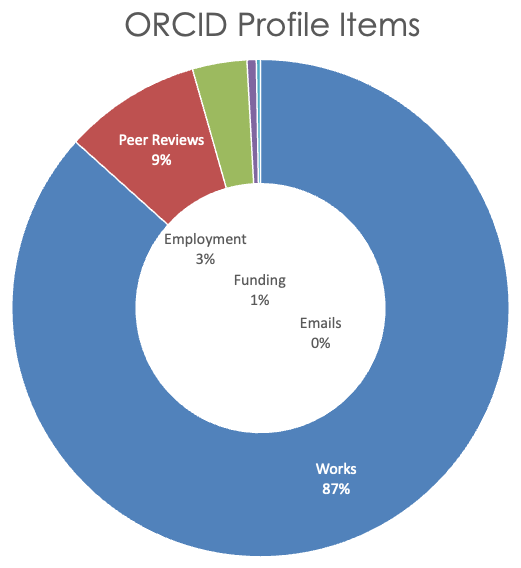ORCID Profiles – What’s There and Where Did It Come From?
/Cite this blog as Habermann, T. (2023). ORCID Profiles – What’s There and Where Did It Come From? Front Matter. https://doi.org/10.59350/ypxdr-ade49
The University Corporation for Atmospheric Research (UCAR) is a community of over 120 colleges and universities doing research aimed at understanding our atmosphere, weather, and climate. UCAR has recently decided to adopt ORCIDs as their organization-wide identifier for researchers, integrating ORCIDs into their research and organization management systems.
Metadata Game Changers has been working with UCAR on this project and started out answering this question: What is in existing UCAR ORCID profiles and how did it get there?
First, we collected over 600 ORCIDs for UCAR employees from OpenSky, the open access institutional repository of scholarly works published by scientists, researchers, and other staff supporting UCAR. We searched these ORCID profiles and retrieved publicly available information.
ORCID profiles include metadata for a diverse and growing set of kinds of things that can be associated with an individual researcher. The UCAR profiles included nearly 23,000 different items, an average of over 36 items / profile. Figure 1 shows that the sample is dominated by papers and other research outputs (works) at 87% with peer-reviews accounting for another 9%. Employment, funding, and emails followed with less than 5% each.
Figure 1. Items in UCAR ORCID Profiles.
A recent discussion of ORCID profiles led by CHORUS identified administrative and researcher burden as significant obstacles to adoption of ORCIDs and other identifiers. Content in ORCID profiles can come from two sources: 1)individuals or 2) organizations that individuals give permission to add items to the profiles. The ORCID metadata include identification of the source of each item in the profile so we could address the second part of the question: how did it get there?
Figure 2 shows the sources of the works items in the UCAR ORCID profiles. The six largest contributors, responsible for 81% of the content, were publishers or PID infrastructure providers (Crossref). Individual researchers provide < 19% of the data.
Figure 2. UCAR ORCID Profile Sources
The UCAR ORCID adoption effort is in its early days, so this is essentially a sample of ORCID profiles in the wild. The data indicate that, in this case, data entry is done mostly by trusted organizations and that individual burden is relatively small. In fact, most of this content is added “magically”, in most cases without the individuals taking any action beyond providing their ORCID and update permissions to the publishers they are already using for their research outputs. This is one of the major benefits of ORCID identifiers, profiles are populated behind the scenes and provide a consistent, structured source of metadata on research and related accomplishments.



